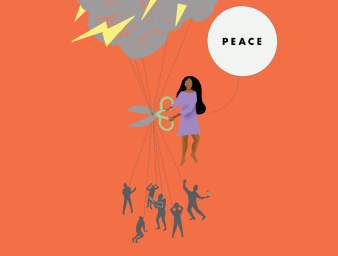Women and girls and their right to sanitation
03 October 2011

The UN declared in 2010 that access to water and sanitation are human rights, but billions of people around the world are a long way from realizing these rights.
It is estimated that 2.6 billion people live without proper sanitation. Over 1.1 billion people have no sanitation facilities at all and practise open defecation: they go to the toilet behind bushes, in fields, plastic bags, ditches or along railway tracks.
Lack of adequate sanitation affects women and girls in particular. Not only do women and girls have different physical needs from men but they also have greater need for privacy when using toilets and when bathing. Inaccessible toilets and bathrooms make them more vulnerable to rape and other forms of gender-based violence.
“Women and girls disproportionate face risks of sexual violence when they have to walk long distances to sanitation facilities, especially at night,” argues Catarina de Albuquerque, UN expert on the human right to safe drinking water and sanitation.
According to Amnesty International, millions of women and girls have to walk more than 300 metres from their homes to use available latrines. The common use of “flying toilets” – human waste disposed of in plastic bags thrown into the open – is a result of the inaccessibility of toilet facilities.
“In addition to the risk of physical and sexual violence, women and girls who defecate in the open, especially in the bush, face the risk of animal attacks,” said the expert.
She said that one study found that women and girls are more susceptible to snake bites because they tend to move quietly in the bush in order to be discreet. Snakes and other animals are then not scared away and are more likely to be surprised by the women’s presence and bite them. Men, on the other hand, are more likely to walk loudly into the bush, scaring snakes and other animals away.
Women and girls don’t need toilets and bathrooms just for defecation. They also have a much greater need for privacy and dignity when menstruating.
“Women and girls have particular sanitation needs when they are menstruating which are rarely discussed and considered,” said the expert. “Menstruation remains a taboo in many cultures,” she explained “and, as a result, the ability to engage in a wide variety of activities – school, work, movement in general – while women and girls are menstruating is restricted when they lack access to an appropriate sanitation facility.”
Separate toilets at school, for example, mean more girls are likely to attend in the first place, and more girls are likely to stay after puberty to complete their education.
“One important step,” the expert said, “is to ensure that women and girls are able to participate in decision making and express their priorities and perspectives.” “Women and girls place higher value on the need for a private toilet than men, and thus are often willing to devote household resources to gaining such access. However, women are rarely in control of the household budget, and access to sanitation remains a low priority in many parts of the world,” she explained.
Girls are also at greater risk if they cannot wash in private. Ms. Albuquerque cited a man who, almost with tears in his eyes, told her that his daughter came home saying she did not want to go to school because the other kids teased her and said she smelled.
The father said,: ‘I know she smells, but we do not have water in our place.’ And when the expert asked him, ‘What did you do?,’ he answered: ‘The only thing I could do was to hug her and cry with her’.”
In June 2011, UN Secretary-General Ban Ki-moon launched the “Sustainable Sanitation: Five-Year Drive to 2015” a push to speed up progress on the Millennium Development Goals of improving global sanitation by 2015 and to ensure sanitation for all.
3 October 2011

VIEW THIS PAGE IN:



